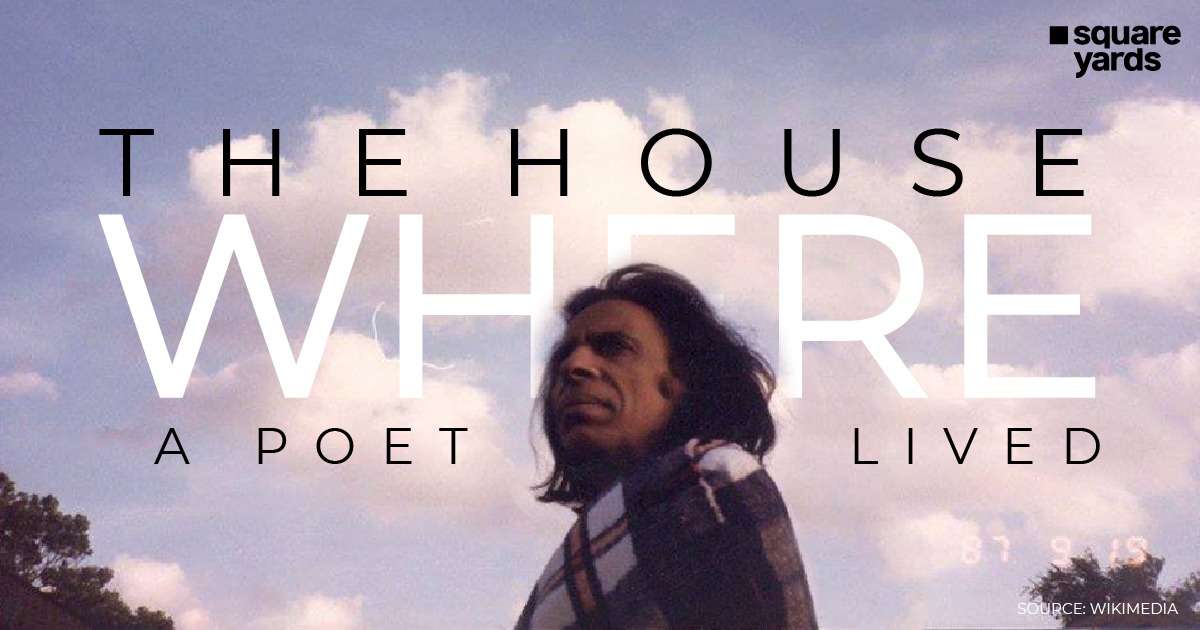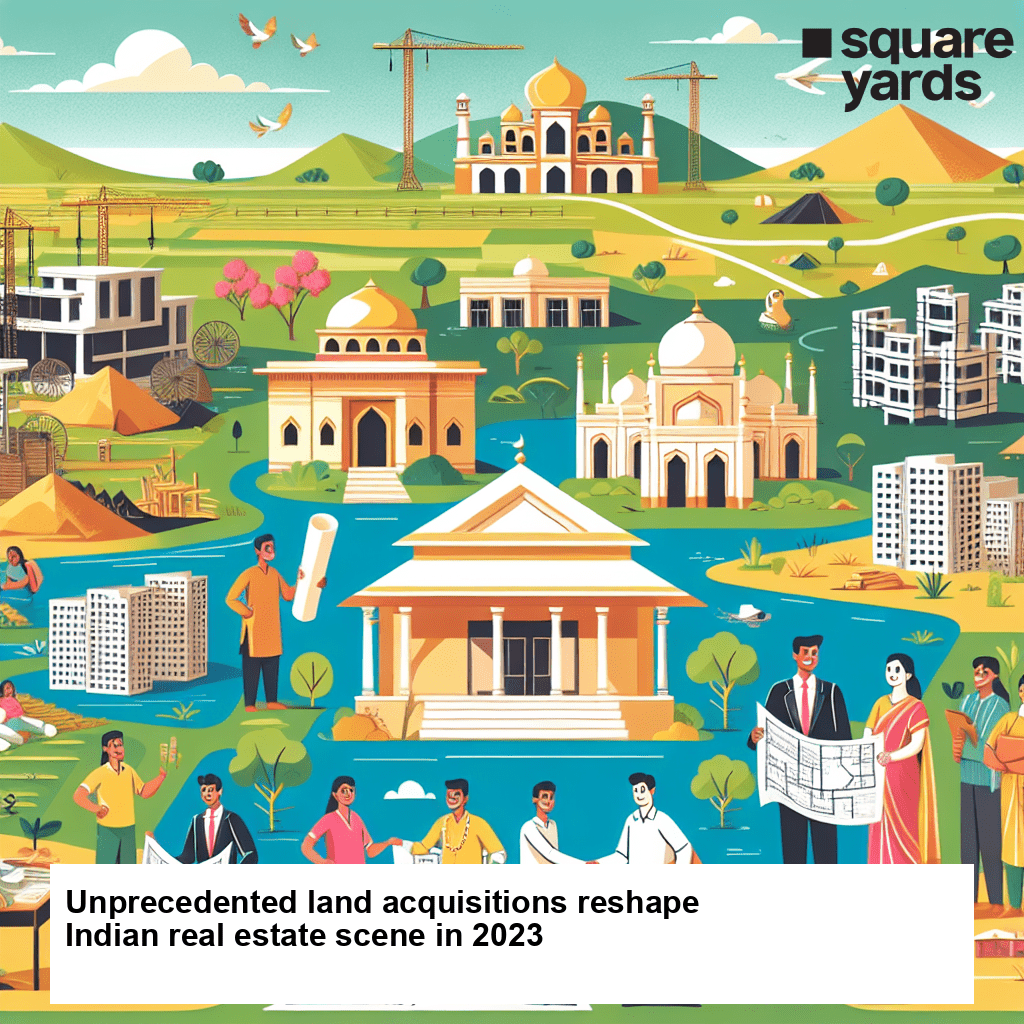It’s not every day that you see a poet’s portrait gazing at you on a real estate portal. After all, how often do you see those who deal in yards and acres talk of those who converse in rhyme and rhythms? There could be two possibilities right now! You could either think of us as completely absurd, or as remarkably unique and fresh. The latter, of course, is the right way to see it.
Since time immemorial, the homes and residences of wordsmiths, poets and writers have been a matter of immense public interest and reverence. Rabindranath Tagore’s Jorasanko Thakur Bari in West Bengal and Ghalib’s Haveli in Delhi are well-known examples. Instead of bringing forth one of these popular residences, we decided to bring forth a paradox—the highly unpopular home of a supremely popular shayar. This paradox is Jaun Elia’s ancestral home in U.P.
Jaun Elia is one of Urdu poetry’s most famous faces. From the pen-and-paper generation to the screen-scrolling Gen Zs, popular stand-up comedians to anonymous meme makers, everyone has a favourite Jaun Elia sher today. Jaun Sahab was buried in Karachi but was born and spent over two decades in U.P.’s Amroha. And that is where we are headed today. Into the house where this timeless artist spent his childhood. To stand under the same skies where a young Jaun once stood, only to write later,
“Yun Jo Takta Hai Aasman Ko Tu,
Koi Rehta Hai Aasman Main Kya”
This one’s for our poet souls – a true coming together of art and architecture. Dive deep into the residence of one of Urdu poetry’s biggest stars. Live through his Amroha house with a little bit of sher-o-shayari and a whole lot of insight.
Table of contents
Rubaru: Meeting the Poet
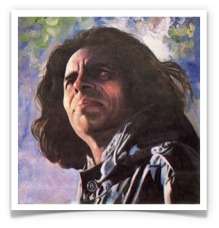
Source: Ali Hameed’s Blog
It’s the general etiquette to have a basic idea of the person whose home one is about to enter. Although we’ve discussed Jaun a little, think of this as a customary briefing right before stepping into the doors of a very famous monument. One way to introduce him is this. Jaun Elia was born in Amroha, U.P., on December 14, 1931. He moved to Pakistan in 1957 following the harrowing partition. Extremely well-learned and a master of multiple languages, he became one of Pakistan’s foremost poets, philosophers and scholars.
All good, all correct, no problems whatsoever. Now, you can either know the poet this Wikipediaic way, or better, you can know him like this:
Main jo hun Jaun Elia hun janab,
Is ka behad lihaaz kijiyega
And that’s it. That’s introduction enough!
Safar: Exploring the House
We’re about to start our journey now. Any journey, or safar, happens in two simultaneous ways. One is the external journey, and the other is the internal. We’ll walk through the poet’s house the same way. First, externally, through its colours, carvings, and halls. And then, internally, through its stories, memories and bonds.
It’s a two-part exploration. Justice to a poet’s house cannot be achieved only by measuring its dimensions. It needs a recollection – of its afsanas (stories) and its mehfils (gatherings). Let’s dive into this journey that’s as much about thoughts and feelings as it is about style and structure.
Part 1: Knowing the House
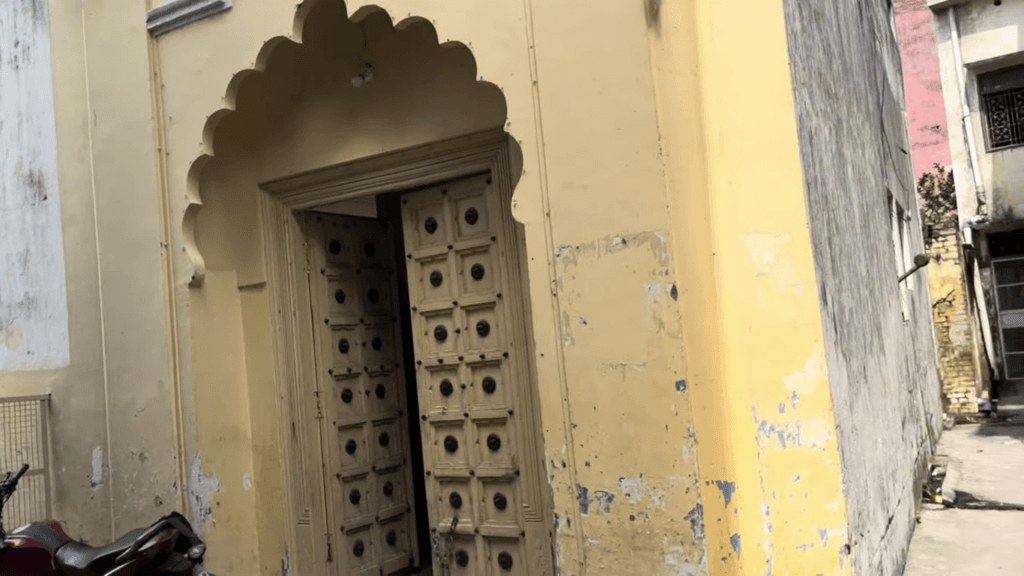
Courtesy: A video tour of the poet’s home on the Youtube channel ‘Saim Hussain’.
Band rahe jin ka darwaza, Aise gharo ki mat pucho
Deewarein gir jaati hongi, Aangan reh jaate honge
A short distance from the Amroha Railway Station, in Mohalla Lakra, is Jaun Elia’s ancestral home. It’s built like a traditional haveli and has all its elements—a thick, heavily designed door, a central courtyard, multiple rooms, and an open terrace. This classical design of yesteryears stands in the middle of today’s compact multi-floors. It makes for a striking display of contradictions: a spacious and tasteful manor with much legacy to hold, surrounded by rather everyday-looking mundane structures.
The central courtyard, or aangan, is the most spacious singular area of the house. Such designs are often seen in Northern India, especially in parts of U.P., Haryana, and Rajasthan. Like most families, the Elias must have used this as the gathering place. The elderly would have soaked the winter sun here on their charpais while the little ones rummaged here and there.
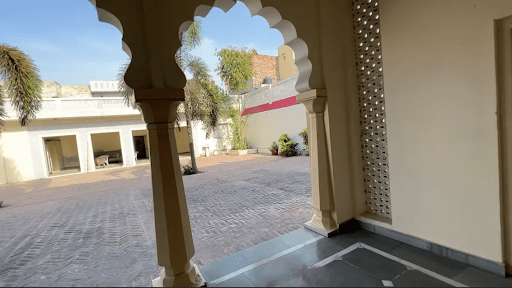
Courtesy: Youtube Channel ‘Nomadic Vlogs’.
The courtyard’s stone flooring invites the attention next. It’s similar to the floors of our ancestral homes back in our villages. It is spacious but modest, expansive but contained. Once again, contradictions!
The beautiful jali work, and the patterned arches are some more tasteful incorporations in this house. But there are also many imperfections. And maybe that’s where its familiarity stems from. That washbasin awkwardly attached to the staircase, dust-laden old switchboards, irregularly scattered grass, and soft colour tones—it all seems like we’ve seen such things around and been here before. The effect is much like Jaun’s shayari: simple, timeless, and universal.
Part 2: Experiencing the House
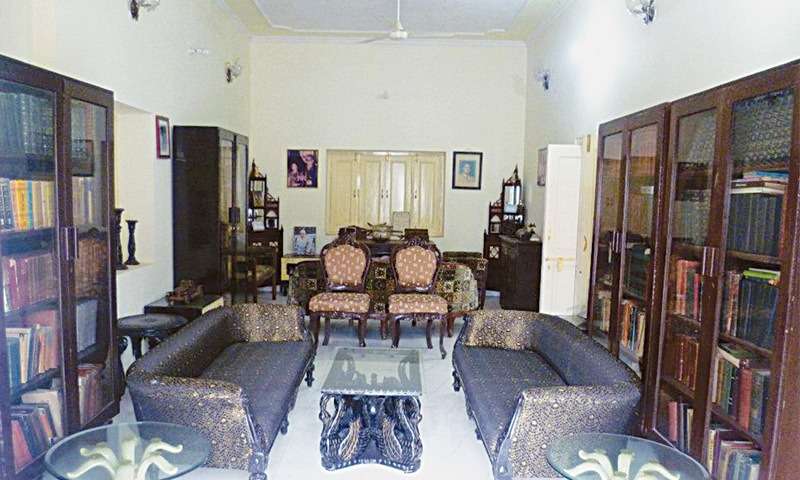
Source: dawn.com
The drawing room of Jaun’s ancestral home
Tum jab aaogi, To khoya hua paogi mujhe
Meri tanhai main, Khaawbon ke siwa kuch bhi nahi
Mere kamre ko sajaane ki tamanna hai tumhe,
Mere kamre main, Kitaabo ke siwa kuch bhi nahi
We’ve called this piece The Property of A Poet. When, in fact, it should be called The Property of Intellectuals. From his father to his older brothers, Jaun was born into a family of highly learned scholars. Within the family, there was a doctor, a philosopher and a writer. The courtyard of this prolific bouquet blossomed another illustrious mind, Kamal Amrohi. The famed director of the 1972 film Pakeeza and Jaun Elia’s first cousin. The two ran through the courtyards of this house together. And now, long after they’re gone, both their posters are solemnly placed on the house’s walls.
A tour through these stories shows what went on in this house. It affirms that everyday discussions in this house revolved around heavyweight ideas like socialism and communism. That the sounds of reason, rationale, and expression naturally made their way into a child’s subconscious. Perhaps it was this home that made Jaun Elia special, and not the other way around.
Part 3: A Home That Was The City
Is Samandar par tishnaakaam hun main,
Baan, tum ab bhi beh rahi ho kya?
Baan is the river that flows through Amroha. The city where Jaun Sahab spent his childhood was as beloved to him as the house where he spent it. While most of his family and friends moved to Pakistan early on, Jaun could not leave until 1957. In the years that followed, the poet forever yearned for his city. This yearning kept Amroha alive even in the alleys and air of Karachi, and his beloved city continued to find its mention in the many shers he wrote till long after partition.
A Man Who Yearned, & Yearned, & Yearned

Source: the news on sunday
The word’ home’, or ‘Ghar’, has many meanings. There is a home that is a structure. It’s made of courtyards, doors and rooms. There is a home that’s a city. It’s made of alleys, friends and childhood. And there is a home that’s our soul. Most intimate of all, it’s made of feelings, passions, and everything we’ve felt about life. For this last home, Jaun wrote, ‘Kaun is ghar ki dekhbhaal kare, Roz ik cheez tut jaati hai.’
This ancestral home was an indispensable part of the poet’s journey. It saw him come up with his first sher at the tender age of eight, but also taste the first pangs of separation through the partition. In that sense, it’s a true witness to two of his life’s constant themes – the beginning of a lifelong passion that’s poetry and the persistence of a recurring pain that is separation. For every poetry lover, this shrine of Hazrat Jaun Elia is open for visit and exploration. Visit it for its history, visit it for its richness, and visit it for the paradox it is. One visit and you’ll find yourself just as pensive as excited.
Bonus
Welcome to this article’s after-party. Here is a short collection of some of Jaun Elia’s startling couplets. Take it as a souvenir from us. Stay tuned with Square Yards for more such hidden architectural finds.
Till then, relish, savour, and enjoy!
|
Kaam ki baat maine ki hi nahi Ye mera taur-e-zindagi hi nahi _________________________________________________ Bedili kya yun hi din guzar jayenge Sirf zinda rahein hum to mar jayenge __________________________________________________ Ae khuda jo kahin nahi maujud Kya likha hai hamari kismat main __________________________________________________ Kitni aish udate honge kitna itraate honge Jaane kaise log wo honge jo unko bhaate honge __________________________________________________ Kitni dilkash ho tum, kitna dil-jun hun main Kya sitam hai ki hum dono mar jayenge __________________________________________________ Daastan khatm hone wali hai Tum meri aakhri mohobbat ho |


